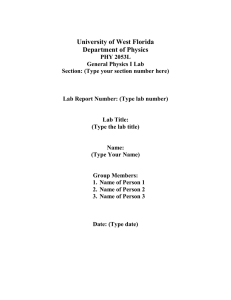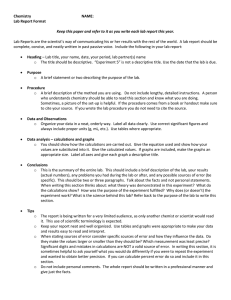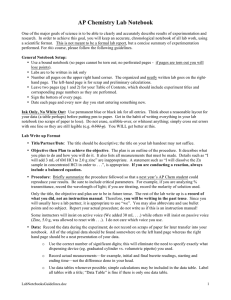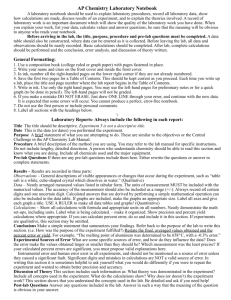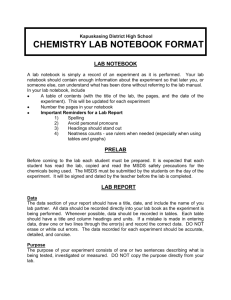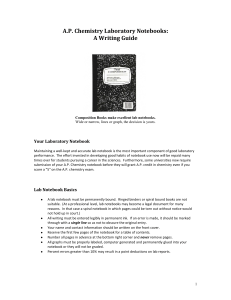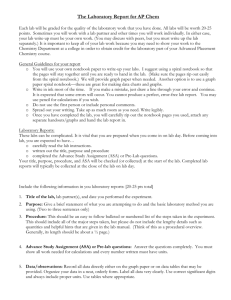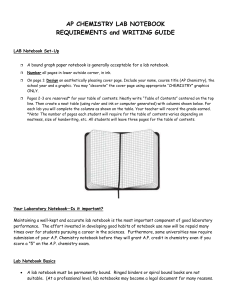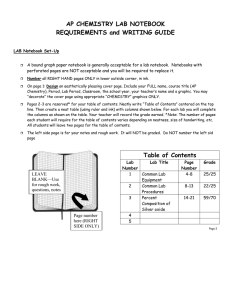Chemistry Lab Report Format & Guidelines
advertisement
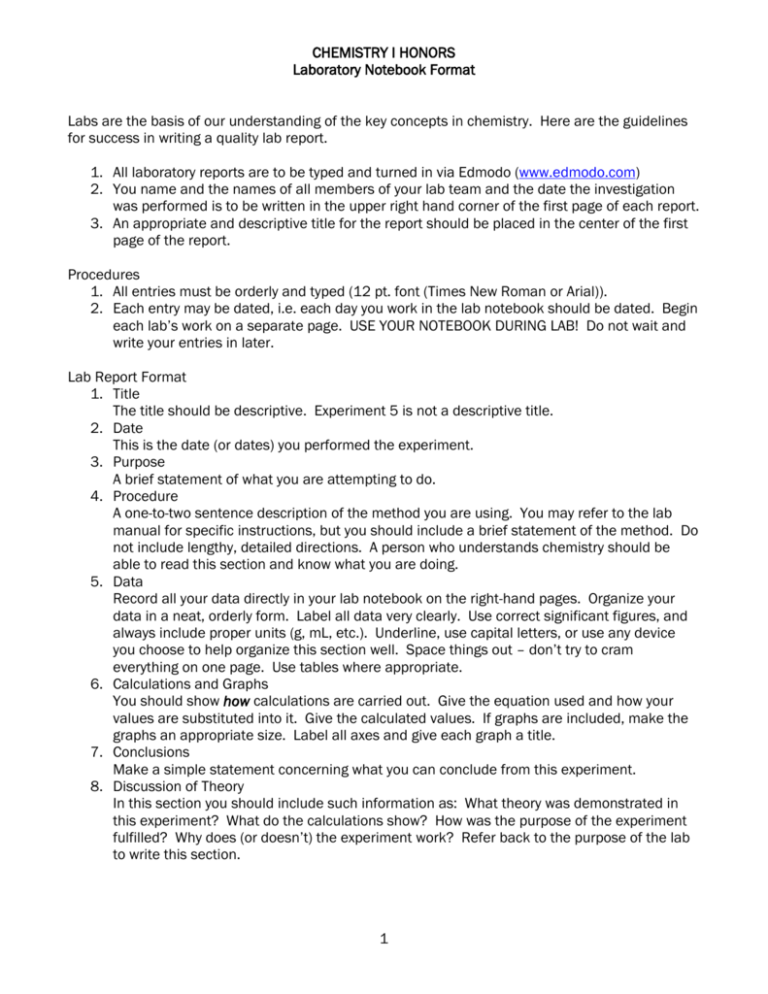
CHEMISTRY I HONORS Laboratory Notebook Format Labs are the basis of our understanding of the key concepts in chemistry. Here are the guidelines for success in writing a quality lab report. 1. All laboratory reports are to be typed and turned in via Edmodo (www.edmodo.com) 2. You name and the names of all members of your lab team and the date the investigation was performed is to be written in the upper right hand corner of the first page of each report. 3. An appropriate and descriptive title for the report should be placed in the center of the first page of the report. Procedures 1. All entries must be orderly and typed (12 pt. font (Times New Roman or Arial)). 2. Each entry may be dated, i.e. each day you work in the lab notebook should be dated. Begin each lab’s work on a separate page. USE YOUR NOTEBOOK DURING LAB! Do not wait and write your entries in later. Lab Report Format 1. Title The title should be descriptive. Experiment 5 is not a descriptive title. 2. Date This is the date (or dates) you performed the experiment. 3. Purpose A brief statement of what you are attempting to do. 4. Procedure A one-to-two sentence description of the method you are using. You may refer to the lab manual for specific instructions, but you should include a brief statement of the method. Do not include lengthy, detailed directions. A person who understands chemistry should be able to read this section and know what you are doing. 5. Data Record all your data directly in your lab notebook on the right-hand pages. Organize your data in a neat, orderly form. Label all data very clearly. Use correct significant figures, and always include proper units (g, mL, etc.). Underline, use capital letters, or use any device you choose to help organize this section well. Space things out – don’t try to cram everything on one page. Use tables where appropriate. 6. Calculations and Graphs You should show how calculations are carried out. Give the equation used and how your values are substituted into it. Give the calculated values. If graphs are included, make the graphs an appropriate size. Label all axes and give each graph a title. 7. Conclusions Make a simple statement concerning what you can conclude from this experiment. 8. Discussion of Theory In this section you should include such information as: What theory was demonstrated in this experiment? What do the calculations show? How was the purpose of the experiment fulfilled? Why does (or doesn’t) the experiment work? Refer back to the purpose of the lab to write this section. 1 CHEMISTRY I HONORS Laboratory Notebook Format 9. Experimental Sources of Error What are some specific sources of error, and how do they influence the data? Do they make the values obtained larger or smaller than they should be? Which measurement was the least precise? Instructional error and human error exist in all experiments, and should not be mentioned as a source of error unless they cause a significant fault. Significant digits and mistakes in calculations are NOT a valid source of error. In writing this section it is sometimes helpful to ask yourself what you would do differently if you were to repeat the experiment and wanted to obtain better precision. If you calculate a percent error or percent deviation, do so and include it in this section. 10. Questions Answer any questions included in the lab directions. Answer in such a way that the meaning of the question is obvious from your answer. Lab Report Grading Rubric Section Points Format 10 Purpose 5 Procedures 5 Data 15 Calculations and Graphs 10 Conclusion 5 Discussion of Theory 10 Experimental Sources of Error 10 Questions 10 Participation in Lab 20 Total 100 2
